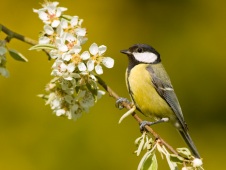
There are many examples of the effects of climate change on birds from around the world, which taken together, provide compelling evidence that climate change is already affecting birds in diverse ways. Examples include: lowland species extending their ranges upslope in Costa Rica, earlier arrival of migrants in the USA, and mismatches in the timing of breeding and food supply in the UK.
There are many examples of the effects of climate change on birds from around the world, which taken together, provide compelling evidence that climate change is already affecting birds in diverse ways. It is these proximate responses that drive the ultimate impacts of climate change on species—the significant changes to ranges that will be catastrophic for many species. Examples of responses include:
Distribution and density
In Finland, breeding Pied Flycatcher Ficedula hypoleuca laid progressively larger eggs through the period 1975–1993, correlating with rises in mean spring temperatures. Since larger eggs enjoy improved hatching success, global warming may allow females to alter their reproductive strategy and invest more resources in reproduction (Jarvinen 1994).
Related Species
References
Compiled: 2004 Copyright: 2004
Recommended Citation:
BirdLife International (2004)
Climate change is already affecting birds in diverse ways.
Downloaded from https://datazone.birdlife.org/sowb/casestudy/climate-change-is-already-affecting-birds-in-diverse-ways on 26/12/2024